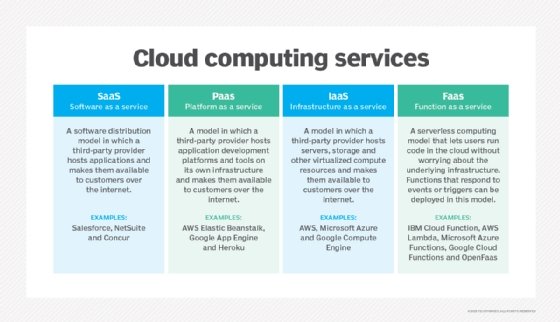Simplify Your Infrastructure With Cloud Provider
As services browse the ever-evolving landscape of modern technology and data management, the role of cloud solutions in streamlining framework has actually ended up being progressively noticeable. Just how can organizations successfully navigate this change and truly open the possibility of cloud services for simplifying their facilities?
Advantages of Cloud Services
Cloud solutions offer a structured approach to handling IT framework, giving organizations with adaptability, scalability, and cost-efficiency. One of the crucial advantages of cloud solutions is the scalability they use. Organizations can quickly scale their sources up or down based on need, guaranteeing they only spend for what they use. This versatility is particularly helpful for services with varying requirements or those experiencing development.
In addition, cloud services eliminate the requirement for businesses to purchase pricey hardware and software application. This cost-efficiency is a significant advantage, specifically for small to medium-sized enterprises seeking to reduce upfront costs. By utilizing cloud services, services can access high-grade IT resources without the substantial cost connected with standard framework setups.
Additionally, cloud services give organizations with the versatility to access their data and applications from anywhere with a net connection. This degree of access boosts collaboration among groups, allows remote work, and raises total performance. The versatility offered by cloud solutions empowers companies to adjust rapidly to changing market problems and consumer needs.
Cost Cost Savings and Scalability
Along with the operational advantages highlighted previously, the combination of cloud solutions right into a business's framework comes up with significant expense financial savings and enhanced scalability. Cloud services provide a pay-as-you-go design, allowing organizations to scale sources up or down based upon present demands, thus staying clear of the expenses related to keeping excess ability. This versatility enables business to adjust rapidly to varying needs without incurring unnecessary expenses.
Moreover, cloud solutions eliminate the requirement for ahead of time investments in hardware and software, decreasing funding expenditures. Operating budget are additionally reduced as business no longer require to take care of and maintain physical web servers, causing lower power intake and IT staffing expenses. In addition, cloud services give automated updates and upkeep, ensuring that the infrastructure continues to be safe and current without calling for hands-on interventions.
Improved Safety And Security Measures
Executing rigid safety actions is extremely important when incorporating cloud solutions right into a business's framework to make certain and protect sensitive information compliance with market policies. Cloud solution carriers offer improved safety functions such as information security, firewall software protection, and multi-factor verification to minimize cybersecurity threats.
Moreover, regular security audits and conformity assessments help guarantee and recognize susceptabilities adherence to market criteria. Business can additionally take advantage of functions like computerized protection updates and real-time risk surveillance supplied by cloud solution providers. By prioritizing security measures and remaining positive in dealing with prospective risks, organizations can confidently take advantage of cloud solutions while protecting their beneficial information from unapproved gain access to or breaches.
Transitioning to Cloud Framework
To effectively incorporate cloud services right into a firm's facilities, a structured technique that deals with the change in the direction of cloud-based services is critical. Transitioning to shadow framework entails mindful preparation and execution to make certain a smooth migration procedure. The very first step is to assess the present framework and determine which applications and systems appropriate for movement to the cloud. This examination needs to consider factors such as data level of sensitivity, conformity requirements, and performance requirements.
Once the analysis is complete, a movement approach should be developed. This strategy needs to lay out the timeline, sources, and duties for relocating each part to the cloud. It is vital to connect this strategy clearly to all stakeholders to make certain alignment and reduce interruptions throughout the More Help change.
During the movement process, monitoring and screening are vital to recognize and resolve any kind of concerns quickly. Normal checkpoints should be developed to track progression and make required modifications. Furthermore, training for workers on making use of cloud solutions must be supplied to make certain an effective transition and make best use of the advantages of the brand-new facilities.
Finest Practices for Cloud Adoption
Successful adoption of cloud solutions depends upon the calculated positioning of business objectives with technical capabilities and business readiness. To make sure a smooth transition to the cloud, organizations need to begin by carrying out a detailed assessment of their existing facilities and identifying which work are best fit for cloud movement. It is crucial to involve key stakeholders from different departments in the decision-making process to acquire buy-in and address any kind of concerns at an early stage.
One more best technique for cloud adoption is to prioritize security and conformity. Organizations needs to thoroughly evaluate the safety steps offered by cloud provider and guarantee that their data is protected according to sector requirements and regulatory demands. Carrying out robust information file encryption, accessibility controls, and routine safety and security audits can help mitigate dangers related to cloud adoption.

Verdict

As companies browse the ever-evolving landscape of innovation and data monitoring, the role of cloud services in streamlining infrastructure has actually ended up being progressively prominent - Cloud Services. Just how can businesses efficiently navigate this shift and genuinely open the capacity of cloud solutions for streamlining their framework?
Cloud solutions use a streamlined strategy to managing IT infrastructure, offering services with versatility, scalability, and cost-efficiency. More about the author By using cloud solutions, businesses news can access top quality IT resources without the hefty rate tag linked with standard facilities arrangements.
To make certain a smooth shift to the cloud, companies should start by performing a thorough analysis of their current facilities and identifying which workloads are best suited for cloud movement.